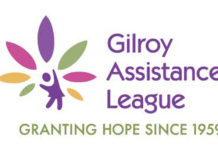Pending legislation would make it easier for transportation
agencies to contract and build toll roads
Hollister – If transportation planners get their way, it will eventually be a lot easier to drive between South County and the Central Valley. It will also be more expensive. Toll roads, once just the bane of travelers in the northeast forced to drop a few nickels in a box, are proliferating and may be coming to Gilroy.
“To get four lanes from Gilroy to [routes] 152-156 you’re going to have to do something,” said Santa Clara County Supervisor Don Gage. “I think you have to put it out to voters and see if they’re willing to do that.”
But voters may never get a chance to have their say. Legislation pending in the state Senate would make it easier for transportation agencies such as the Santa Clara Valley Transportation Authority to contract with private companies to build toll roads, and VTA staffers see such roads as the answer to many of the South Valley’s transportation woes.
VTA deputy director John Ristow said that in addition to linking Interstate 5 with Route 101, private financing will be needed for improvements to 101 and highways 25 and 156.
“When we evaluate the whole southern gateway area we find that the necessary infrastructure to handle what we see as the need there is pretty enormous,” Ristow said “It approaches a billion dollars to take care of what’s needed down there over the next 20 or 30 years.”
And South County is seen as a vital link for commuter, leisure and commercial traffic. Caltrans has estimated that as many as 30,000 vehicles travel Pacheco Pass on its busiest days. Congressman Richard Pombo, R-Tracy, wants to build a highway linking San Jose to the valley through the Diablo Mountain Range. And the VTA’s southern gateway study, which should be released later this summer, will illustrate how far commuters are traveling to get to their hi-tech jobs.
“There’s a lot of traffic coming over from the valley and this could also be a way to get people around on 25 and make the commute smoother until we get rail in there,” Gage said.
In a public-private financing agreement, cash-strapped agencies such as the VTA rely on for-profit companies to build new roads in exchange for toll revenue. Such agreements would also help the VTA secure federal grants for projects, which typically must be matched with local funds. SB 561, which has broad bipartisan support, would allow private companies to receive toll revenue for up to 99 years, after which control of the roads would revert to the state.
There are currently two toll roads in operation in Orange County and a third scheduled to open near San Diego later this year. Unlike the traditional pay-as-you-go turnpike, the southern California routes give travelers the option to pay their way out of traffic congestion. Tolls on State Route 91 through Orange and Riverside counties range from $1.50 to $7.75 depending on the day and time.
These so-called HOT lane are a high priority for Bay Area traffic planners. They are incorporated heavily in the Metropolitan Transportation Commission’s 25-year transit plan for the nine Bay Area counties.
To critics, HOT lanes are known as “Lexus Lanes” because of a perception that toll roads discriminate against the economically disadvantaged. Assemblywoman Jenny Oropeza, D-Carson, has called the lanes “elitist.” Chairwoman of the Assembly Transportation Committee, she was the only member of that committee to vote against AB 850, a toll road bill that was eventually folded into SB 561.
Decrying Gov. Schwarzenegger’s support for the bill, she declared that “instead of building roads for the rich, California leaders should support the building of roads for people.”
And local community providers say toll roads are an unfair burden to a community’s poorest members.
“For those who are already struggling just to make ends meet, to keep the car on the road and gas in the tank, any additional cost would be a hardship,” said Lisa DeSilva, director of development at Community Solutions in Morgan Hill.
Aaron Moreno, a policy aide to Assemblyman Joe Canciamilla, D-Martinez, who authored the Assembly toll road bill, called those arguments disingenuous in a state filled with toll bridges. He said toll roads are supported by frustrated travelers, organized labor and the business community.
“Studies have shown that people who choose to use toll roads are small business people who are willing to pay for the right to get through quicker,” Moreno said. “Additionally, there’s the idea that anytime you get cars out of the main lanes, it benefits everybody.”
California toll roads
Orange County
• State routes 73 and 241, which
run parallel to Interstate 5
• State Route 91
San Diego County*
• State Route 125
*Scheduled to open later this year.












